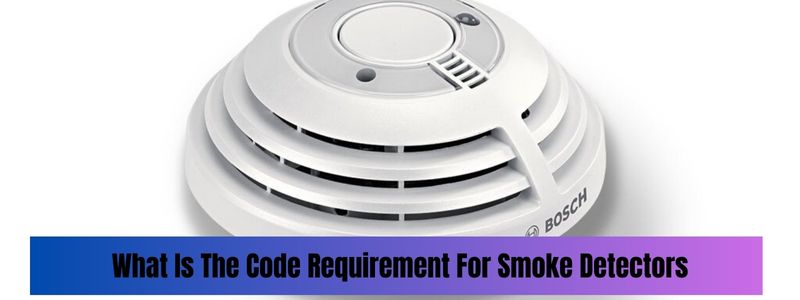The realm of fire safety and prevention is vast and complex, encompassing a myriad of technologies and equipment. Among these are heat detectors, essential components in any fire protection system.
The question often arises – “What are the two types of heat detectors?” This query is important, as understanding the different types of heat detectors can help in selecting the correct one for your specific needs, potentially saving lives and property in the event of a fire.
What Are The Two Types Of Heat Detectors?
Heat detectors are typically classified into two main types: fixed temperature heat detectors and rate-of-rise (ROR) heat detectors. The primary distinction between the two lies in the way they detect and respond to heat.
Fixed Temperature Heat Detectors
Fixed temperature heat detectors are designed to respond when the ambient temperature reaches a preset level. These detectors have a small, eutectic alloy element that melts when the surrounding temperature reaches a specific threshold, usually between 135°F and 165°F. When this alloy melts, it triggers an alarm, alerting occupants to the presence of a fire.
- Suitability: These detectors are best for environments with normally high temperature fluctuations, such as kitchens or attics.
- Advantage: They are less prone to false alarms due to rapid, non-fire related temperature increases.
- Disadvantage: They might not respond quickly to fast-growing fires if the preset temperature is not reached in time.
Rate-of-Rise Heat Detectors
Rate-of-rise heat detectors, on the other hand, are designed to react when they detect a rapid increase in temperature over a short period of time, typically 15°F per minute. They operate using a thermocouple or a thermistor that senses the rate at which the ambient temperature is increasing.
- Suitability: These detectors are ideal for environments where the temperature remains relatively constant, like living rooms or bedrooms.
- Advantage: They can respond quickly to fast-growing fires.
- Disadvantage: They can trigger false alarms due to non-fire related rapid temperature increases, such as opening a furnace door.
| Type | Suitability | Advantage | Disadvantage |
|---|---|---|---|
| Fixed Temperature | Kitchens, attics | Less prone to false alarms | Slow response to fast-growing fires |
| Rate-of-Rise | Living rooms, bedrooms | Quick response to fast-growing fires | Prone to false alarms due to rapid temperature changes |
Key Takeaways
Understanding the two types of heat detectors—fixed temperature and rate-of-rise detectors—is crucial for efficient and effective fire safety. The choice between these detectors depends on the specific needs of the environment.
For spaces with high temperature fluctuations, a fixed temperature detector is more suitable, whereas for areas with stable temperatures, a rate-of-rise detector would be the better choice. Understanding these nuances can lead to safer choices in fire protection systems.
FAQs
What are the two types of heat detectors?
The two main types of heat detectors are fixed temperature heat detectors and rate-of-rise heat detectors.
How do fixed temperature heat detectors work?
Fixed temperature heat detectors work by having a eutectic alloy element that melts when the surrounding temperature reaches a specific threshold, usually between 135°F and 165°F, which triggers an alarm.
In what scenarios are fixed temperature heat detectors ideal?
Fixed temperature heat detectors are ideal for environments with normally high temperature fluctuations, such as kitchens or attics.
How do rate-of-rise heat detectors work?
Rate-of-rise heat detectors work by using a thermocouple or a thermistor that senses the rate at which the ambient temperature is increasing. They are designed to react when they detect a rapid increase in temperature over a short period of time, typically 15°F per minute.
In what scenarios are rate-of-rise heat detectors ideal?
Rate-of-rise heat detectors are ideal for environments where the temperature remains relatively constant, like living rooms or bedrooms.
Read more:
- Is Heat Detector Required In Garage?
- What Is The Area Range Of A Heat Detector?
- Where Should You Not Install A Heat Detector?

Edward’s expertise in smoke detectors is particularly noteworthy. He has conducted extensive research on the latest advancements in smoke detector technology and has worked closely with manufacturers to develop cutting-edge products that can detect fires more accurately and quickly.




